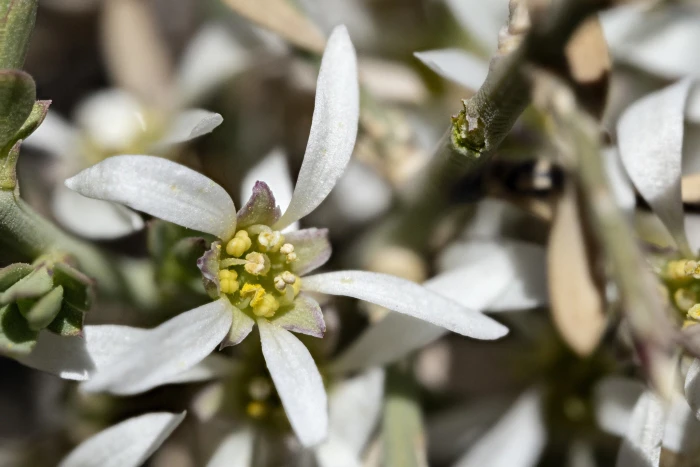Spiny Greasebush
(Glossopetalon spinescens)
Spiny Greasebush (Glossopetalon spinescens)
/
/

Cecelia Alexander
Public Domain
Image By:
Cecelia Alexander
Recorded By:
Copyright:
Public Domain
Copyright Notice:
Photo by: Cecelia Alexander | License Type: Public Domain | License URL: http://creativecommons.org/publicdomain/zero/1.0/ | Rights Holder: Cecelia Alexander | Publisher: iNaturalist | Date Created: 2021-04-02T12:44:53-07:00 |



















































Estimated Native Range
Climate Requirements for Kurashiki, Japan
| This Plant | Your Site | Plant Suitability for Your Location | ||
|---|---|---|---|---|
| • Precipitation | 11" - 13" | 56" | Aquatic | Aquatic |
| • High Temp. | 84°F - 95°F | 90°F | Your summer temperatures are normal for this plant. | Excellent |
| • Low Temp. | 14°F - 31°F | 32°F | Your winter temperatures are normal for this plant | Excellent |
This plant may not grow well at your location - your precipitation is too high.
Summary
Glossopetalon spinescens, commonly known as Spiny Greasebush, is a deciduous to semi-evergreen subshrub or shrub native to arid regions, including deserts, chaparral, and scrublands in the Western USA and Northern Mexico. It typically grows to a height of 1-3 meters (3-9.8 ft) and forms a dense, erect clump of many thin, branching, thorny stems. The small, inconspicuous white flowers with five petals appear in the leaf axils and bloom from March to September, with a peak flowering period in March or April to May in Arizona. The plant’s overall appearance is characterized by its spiny branches and small, leathery leaves.
Spiny Greasebush is valued for its drought tolerance and ability to thrive in challenging environments, making it suitable for xeriscaping and naturalistic plantings in arid regions. It is also used for erosion control due to its dense growth habit. In cultivation, it requires minimal care, preferring part shade to full sun, low water once established, and well-drained soils. While not commonly found in nurseries, it can be a unique addition to rock gardens or desert landscapes.CC BY-SA 4.0
Spiny Greasebush is valued for its drought tolerance and ability to thrive in challenging environments, making it suitable for xeriscaping and naturalistic plantings in arid regions. It is also used for erosion control due to its dense growth habit. In cultivation, it requires minimal care, preferring part shade to full sun, low water once established, and well-drained soils. While not commonly found in nurseries, it can be a unique addition to rock gardens or desert landscapes.CC BY-SA 4.0
Plant Description
- Plant Type: Subshrub, Shrub
- Height: 5-6 feet
- Width: 3-4 feet
- Growth Rate: Moderate
- Flower Color: White
- Flowering Season: Spring, Summer
- Leaf Retention: Semi-deciduous
Growth Requirements
- Sun: Part Shade
- Water: Low
- Drainage: Medium, Fast
Common Uses
Drought Tolerant, Erosion Control, Low Maintenance, Rock Garden
Natural Habitat
native to arid regions, including deserts, chaparral, and scrublands in the Western USA and Northern Mexico
Other Names
Common Names: Spring Greasebush, Nevada Greasewood, Spiny Greasewood
Scientific Names: Glossopetalon spinescens, Forsellesia spinescens, Forsellesia spinescens subsp. mexicana, Forsellesia spinescens var. typica, Glossopetalon spinescens var. typicum
GBIF Accepted Name: Glossopetalon spinescens Gray